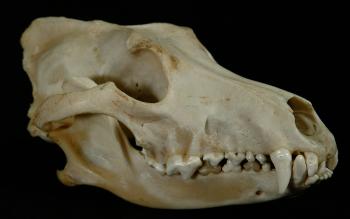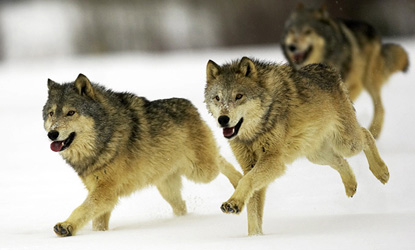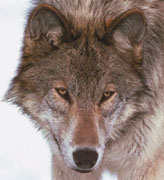Physical Traits
Wolves possess many traits that help them hunt and protect themselves.
They are built to be highly skilled predators, which means
they
hunt other animals for food.
The links below will lead you to more information on the
features
of wolves that make them special. Or if you'd rather read
everything in order, just go ahead and scroll down.
Ears
You may know that dogs have much better hearing than humans.
Well, since wolves are the ancestors of dogs, their hearing
is
also very sensitive. In fact, wolves are capable of picking up
sounds up to a distance of six miles. Imagine having a
conversation with your friend in the next town without using a
telephone! Wolves, like dogs, can also pick up very
high-pitched
sounds that humans can't hear.
Nose
When people think of dogs, they often think of them as having a very
strong sense of smell. This is also true of the ancestor of
the
dog, the wolf. In some cases, wolves can smell their
prey
when it is a
mile or more away!
Eyes
A wolf's eyesight is quite powerful, and is also very good in the dark.
This helps it to spot movement while hunting in any condition
or
time of day.
Mouth

Wolves have long, sharp teeth. The longest and sharpest are
the
four canine teeth, which wolves use to keep hold of their prey
once
they have caught it. Their jaws are also very powerful to
help
crush the bones of their prey.
Legs

Since a wolf's legs are so long and muscular, it can run at high speeds
to catch food. Over a short distance, a wolf can run up to 40
miles
per hour. This means it could keep up with your family car
for a
short time! A wolf can also run about 12 miles straight at a
lower speed of about 15 to 30 miles an hour.



